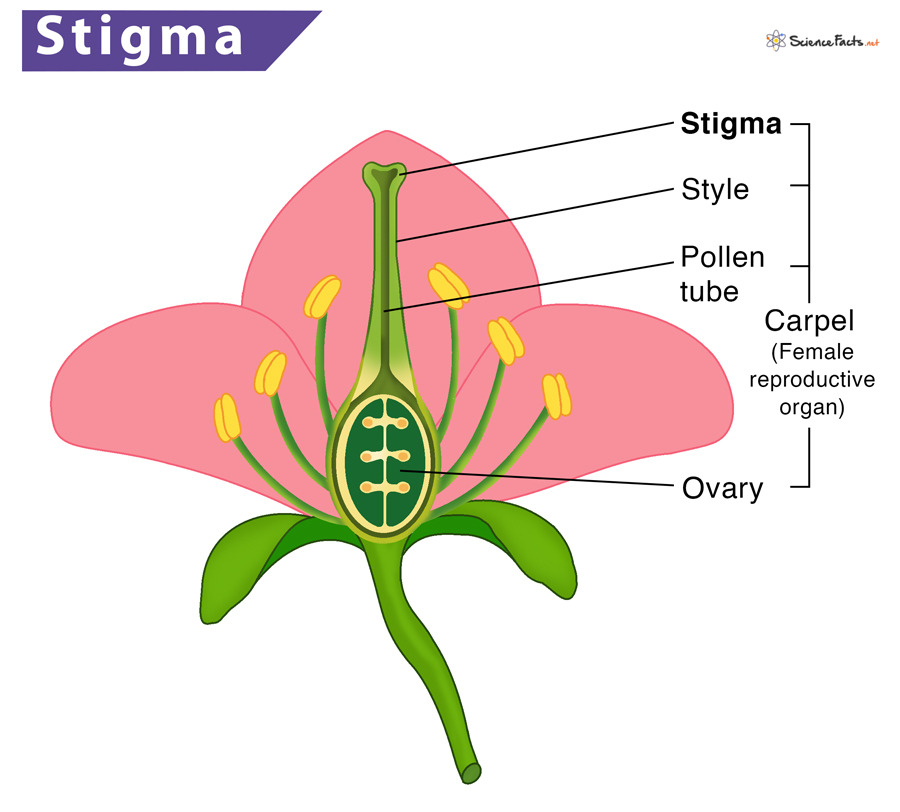Stigma
What is Stigma
Stigma is a part of the female reproductive structure of the flower. It comprises the pistil, a part of the gynoecium or female reproductive organ of a plant, together with two other structures, the style, and ovary. Stigma is a specially adapted portion of the pistil modified for pollen reception.
Location: Where is the Stigma Located on a Flower
In most flowers, the pistil is usually located in the center of the flower. The stigma sits at the top of the pistil. It remains attached to the long, tubelike structure called the style.
Structure
The stigma is a swollen, knob-like structure. It can be either hairy or sticky, or sometimes both to trap pollen grains. In wind-pollinated flowers, like grasses, it may be feathery and branched or elongated. However, for some other flowers, it may be compact and has a sticky surface.
Shape
The shape of stigma can vary. It can be long and slender to globe-shaped and feathery. The stigma is often split into lobes. Its shape may also be capitate, resembling the head of a pin or punctiform, looking just like a point.
Function: What Does the Stigma Do in a Flower
The function of sigma is to receive pollen grains and germinate them.
First, the stigma captures the pollen. Next, as the pollens stick to it, the dry pollen grains get rehydrated or germinated. The stigma then transmits hormonal signals to the pollen grains directing them to elongate into the pistil, forming a pollen tube.
Summarizing the functions:
- Receives pollen grains
- Germinates pollen grains
- Helps in the formation of the pollen tube.
-
References
Article was last reviewed on Friday, December 24, 2021




